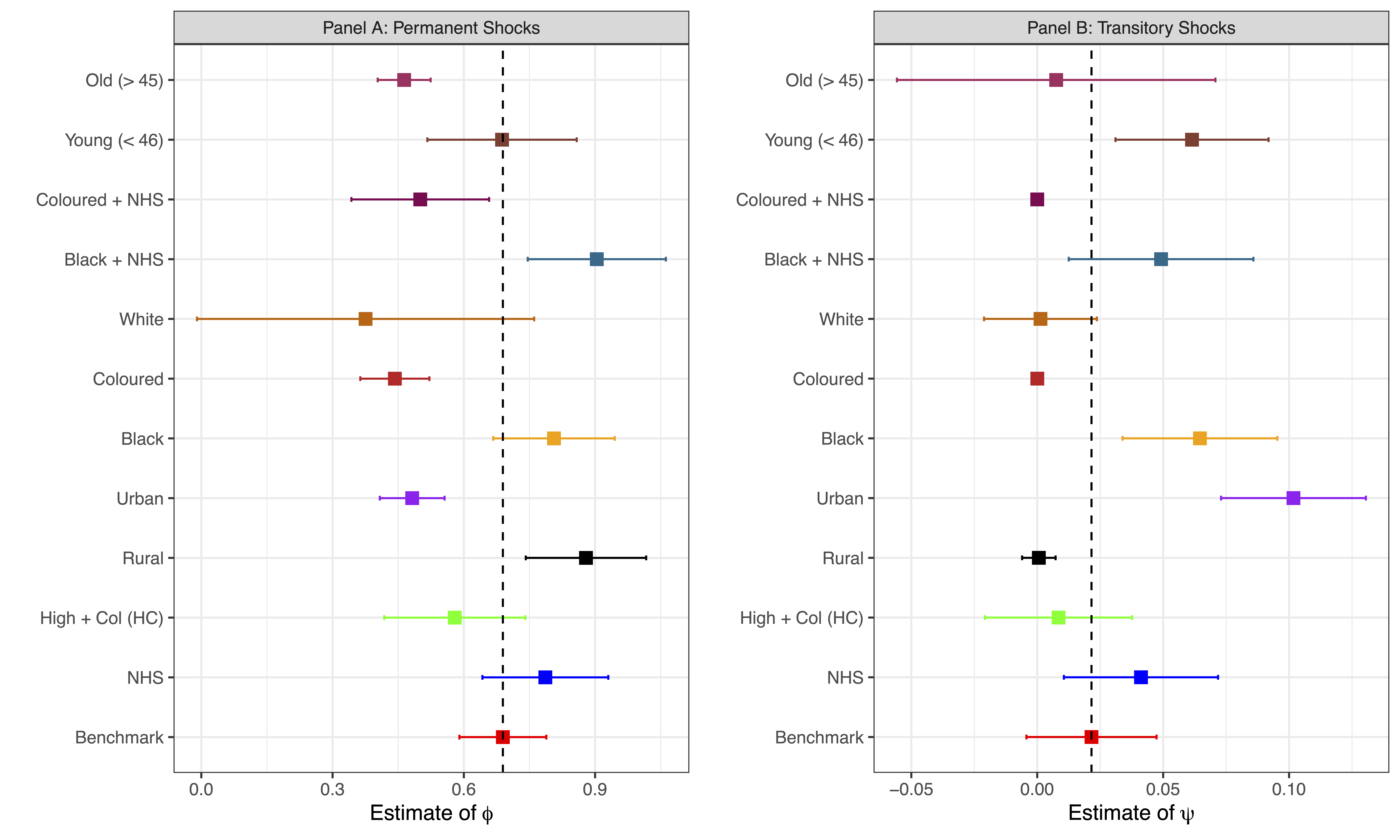Home


Welcome to my personal website!
My name is Francis Chiparawasha.
My research interests are in Macroeconomics, Labour Economics, and Household Finance. My current research focuses household consumption and saving behavior, labour market dynamics, and DSGE modelling.
Research

Published Papers
"A Guide to Estimating the Canonical Income Process in Quasidifferences", (with Dmytro Hryshko), Macroeconomic Dynamics, 2023:1-22
Abstract: The canonical income process, including autoregressive, transitory, and fixed effect components, is routinely used in macro and labor economics. We provide a guide for its estimation using quasidifferences, cataloging biases in the estimated parameters for various ,N ,T, initial conditions, and weighting schemes. Using Danish administrative data on male earnings, estimation in quasidifferences yields divergent estimates of the autoregressive parameter for different weighting schemes, which conforms to our simulation results when the variance of transitory shocks is higher than that of persistent shocks, true persistence is high, and the persistent component’s variance in the first sample year is nonzero. We further apply quasidifferences to the data from a calibrated lifecycle model and find significant biases in the persistence of shocks and their insurance. Estimation of the income process using quasidifferences is reliable only when the variance of persistent shocks is higher than that of transitory shocks and the moments are equally weighted.
Working Papers
"Employment Inequality Among Prime-Age Men in Canada", Job Market paper

Abstract: The employment rate of prime-age men in Canada has been trending downwards for several decades, with the decrease more pronounced for low-educated men. The paper examines the cause(s) of divergence in employment rates between low- and high-educated men. I use a search and matching model that incorporates labour demand, labour supply, match efficiency, search effort, nonemployment duration dependence and job separation channels. In the model, workers differ in ability and search effort, and firms post ability-specific vacancies to attract workers. I use this model to explain the rise in employment inequality between 1990 and 2019. The results indicate that the labour supply and job separation channels are the primary causes of the rise in inequality, while improvements in matching efficiency helped to moderate the increase. I also show that a model without search effort and nonemployment duration dependence understates the role of the matching efficiency channel by 80% while overstating the contribution of the labour supply channel by 25%. The significant role of the supply channel is consistent with diverging shifts in preference for leisure and generosity of government insurance programs in Canada.
"The Role of Private and Public Transfers for Consumption Insurance in South Africa" Coming soon!

Abstract: Household income shocks can be detrimental to families' well-being, especially in developing countries where the level of consumption for many families is already close to subsistence. This paper estimates the degree and primary sources of household consumption insurance in South Africa during the period 2008-2017. The paper uses the methodology of Blundell et al. (2008), in which income shocks can either be transitory or permanent, and the ability of households to smooth these income shocks depends on available resources. Because families have access to limited resources, they can only partially cushion consumption from the income shocks. The results indicate that households have almost full insurance against transitory shocks and can insure about 31 percent of the permanent income shocks. The degree of consumption insurance also differs by education, region of residence, race and age. The results also show that income from private transfers is more effective at smoothing consumption than public transfers.
Working in Progress
"An Estimated DSGE Model for the South African Labour Market"
"Marital Unemployment Gap in South Africa", (with Rejoice Mabhena)
"Earnings Inequality Over the Life Cycle in South Africa", (with Rejoice Mabhena)





